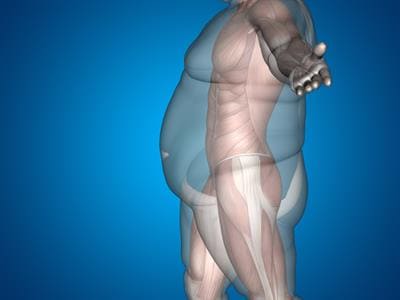General Surgery Department - Nav Imperial Hospital
What is General Surgery?
The term "general surgery" refers to medical therapy that is delivered through an incision in the body. Earlier, performing the surgical treatment required creating a huge incision. But, today developments in technology allow for making small incisions (less than 1 centimeter), employing tiny tools, and using cameras.
General surgery requires robust knowledge and skills for preoperative, operational, and postoperative management of patients. It deals with patients having a wide range of disorders, including those that require non-operative, elective, or emergency surgical treatment. Disease like - Gallbladder, Oesophagus, Stomach, Hernia, Stone, Piles, Thyroid gland, Fistula, Liver, Appendix, Small intestine, Large intestine cancer, etc. requires surgical treatment. Nav Imperial Hospital offers surgical treatment of the above-mentioned diseases and a variety of other conditions. We are amongst the best hospitals for general surgery in Jaipur.
When does General Surgery need to be done?
General Surgery treatment can be applicable to many cases emerging out from a variety of reasons, Some of them are mentioned below:
For the above mentioned surgeries, the general surgery department at NavImperial Hospital in Jaipur.
Trauma Surgery
Trauma surgery is a special kind of surgical procedure that focuses upon the treatment and management of injuries incurred by impact forces(events that give high shock in a relatively short period of time), which are often life-threatening. Traffic accidents, Falls, Sports, Crush injuries, Gunshot, or stabbing wounds, are some of the most typical causes of impact forces. Trauma surgeons are frequently part of a larger team of specialized surgeons, including orthopedic (musculoskeletal) surgeons, vascular (arteries, veins, and other vessels) surgeons, maxillofacial (facial injuries) surgeons, cardiothoracic (heart and thoracic organs) surgeons, plastic (body reconstruction following) surgeons, and neurosurgeons (brain and nervous system).
Laparoscopic Surgery
Laparoscopic surgery is an advanced surgical technique that is also known as minimally invasive surgery (MIS), band-aid surgery, or keyhole surgery. A laparoscopy procedure involves a camera(fitted on top of the laparoscope) which is used to examine the belly or pelvis through small incisions (typically 0.5�1.5 cm).
For this purpose, a device called laparoscope is used which facilitates diagnosis or therapeutic procedures by making a few small cuts in the abdomen. Parts (pen-shaped tubes with a valve) are inserted through small incisions into the abdominal cavity and inflated with carbon dioxide gas to create space between the internal organs and allow viewing and organ manipulation. The video camera, which also includes a built-in light source, is accessed through one of the trocars.

Pediatric Surgery
Pediatric surgery treatment is offered for foetuses, newborns, children, adolescents, and young adults. Pediatric surgery includes the diagnosis, operation, and recovery of children with congenital and acquired abnormalities and disorders, whether developmental, inflammatory, neoplastic, or traumatic. It focuses on surgical disorders in prenatal, infancy, childhood, adolescence and possibly young adulthood. Surgical issues encountered by children surgeons are distinct from those which are encountered by an adult or general surgeon. Pediatric surgery requires specialized training. As the patient progresses to adulthood surgeons and physicians need an engagement with a past pediatric surgeon, for certain cases of diagnoses.

Bariatric Surgery
In some cases exercising and taking a healthy diet are typically ineffective in treating those who are seriously overweight. Bariatric surgery is a procedure that is used to assist overweight people in reducing their weight. Evidence suggests that bariatric surgery, when complemented with a good diet and necessary lifestyle modifications after surgery, can reduce death rates in people with severe obesity. Bariatric surgery is carried out to help you reduce body weight and lower the risk of developing potentially fatal weight-related health problems like stroke and heart disease, severely high blood pressure, NAFLD, also known as nonalcoholic steatohepatitis, is a type of nonalcoholic fatty liver disease (NASH), Apnea (sleep deprivation), Diabetes type 2.
Bariatric surgery is usually performed only after failed attempts by an individual to reduce weight by changing his/her diet and exercising routine. To get the best result with bariatric surgery, get your treatment at Nav Imperial hospital pioneer for providing the best bariatric surgery in Jaipur.
Hernia surgery
Hernia occurs when an organ protrudes through the structure or muscle that normally holds it in place and the intestine pushes through a weak area in the abdominal wall.
To cure hernia, surgery needs to be performed. It is one of the most popular surgical processes. Because hernia repairs are so common, you must understand its options for surgery, anaesthesia, and postoperative pain treatment. The hernia is treated with surgery. There are three types of hernia operations options available that include Open surgery, Laparoscopic (minimally invasive) repair, and robotic repair. Inguinal hernia is the most common type of abdominal wall hernia. Inguinal hernias that cause discomfort or other symptoms in your intestine and abdomen area, as well as those that are incarcerated or strangulated, should be repaired surgically.


Gallbladder surgery
The gallbladder is a tiny sack that rests beneath the liver on the right side of the abdomen. It is roughly the shape and size of a pear. The major function of the gallbladder is to retain and concentrate bile produced by the liver. After eating, bile is secreted from the gallbladder, which aids digestion. The common bile ducts (CBD) transport bile from the liver to the small intestine. Gallstones are small pieces of hard crystalline mass formed abnormally in the gallbladder. Cholesterol and pigments in bile can sometimes form hard particles, resulting in these stones.
A cholecystectomy (gallbladder stones removal surgery) is a surgery in which a small video camera and special surgical instruments are put into your abdomen through four small incisions to view your abdomen and remove the gallstones. The medical term used for this procedure is laparoscopic cholecystectomy. The gallbladder can sometimes be removed with a single large incision also.
Fistula surgery
A fistula is a misplaced or we can say incorrect connection between two biological parts, such as an organ or a blood vessel, and another structure. Accidents or surgery are the most likely reasons for fistulas. A fistula can also occur as a result of infection or irritation. Several fistulas can be treated with antibiotics and other medications. If none of these methods works, surgery to remove the fistula may be required.
Breast Surgery
Breast surgery is a surgical procedure that is used to alter the appearance of a woman's breasts and for(a man's it is known as gynecomastia surgery). These procedures are carried out for a variety of reasons, such as breast reduction for back pain, breast lumps, and breast cancer.
In some cases, Mastectomy(A kind of Breast surgery) is done to remove the complete breast from the chest to protect it from cancer. There are also cosmetic motives, such as a desire to have a different breast shape or style, and some procedures are performed for some specific purpose such as reconstructing or enlarging the breast to make it appear more youthful.

Appendectomy Surgery
A process where the appendix is removed surgically is known as Appendectomy Surgery. It is frequently used to treat the appendix problem.
When the appendix becomes inflamed and enlarged due to an infection, an appendectomy is performed to remove it. Appendicitis is the medical name for this condition. When the passage of the appendix becomes clogged with organisms and waste, an infection can result. Your appendix will become swollen as a result of this.
Frequently Asked Questions
Frequently asked questions about Bariatic Surgery
Depending upon the type of surgery and its severity, precaution can vary. All the precautions that need to be taken will be informed by the surgeon.
After surgery, many people don't feel like eating. They're sick, constipated, or simply not hungry. After surgery, staying hydrated and eating a balanced diet will help you recuperate faster, avoid common complications, and get over anesthesia's unpleasant side effects.
It is completely dependent on the state of your health, most patients return to their normal activities within a week or two.
It is nearly impossible to remove scars instantly, even if we do advanced laser therapy. It takes a minimum of 6 months or 1 year to heal the scar completely.
Depending on the type of surgery you had, you may have to wait up to 6 months before engaging in any hard exercise. As a result, you may need to avoid sprinting, hard lifting, and jumping for the first few months, as these activities may impede the healing process and perhaps cause injury.
Mostly the symptoms include a bulge, swelling or pain. In many cases, no symptoms are seen. Diagnosis can help with the detection of hernia.